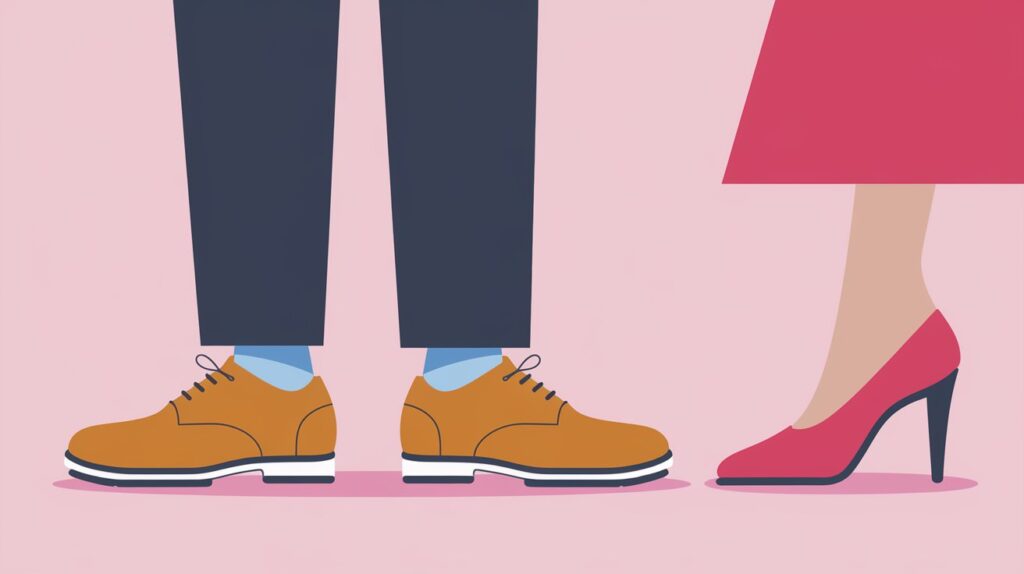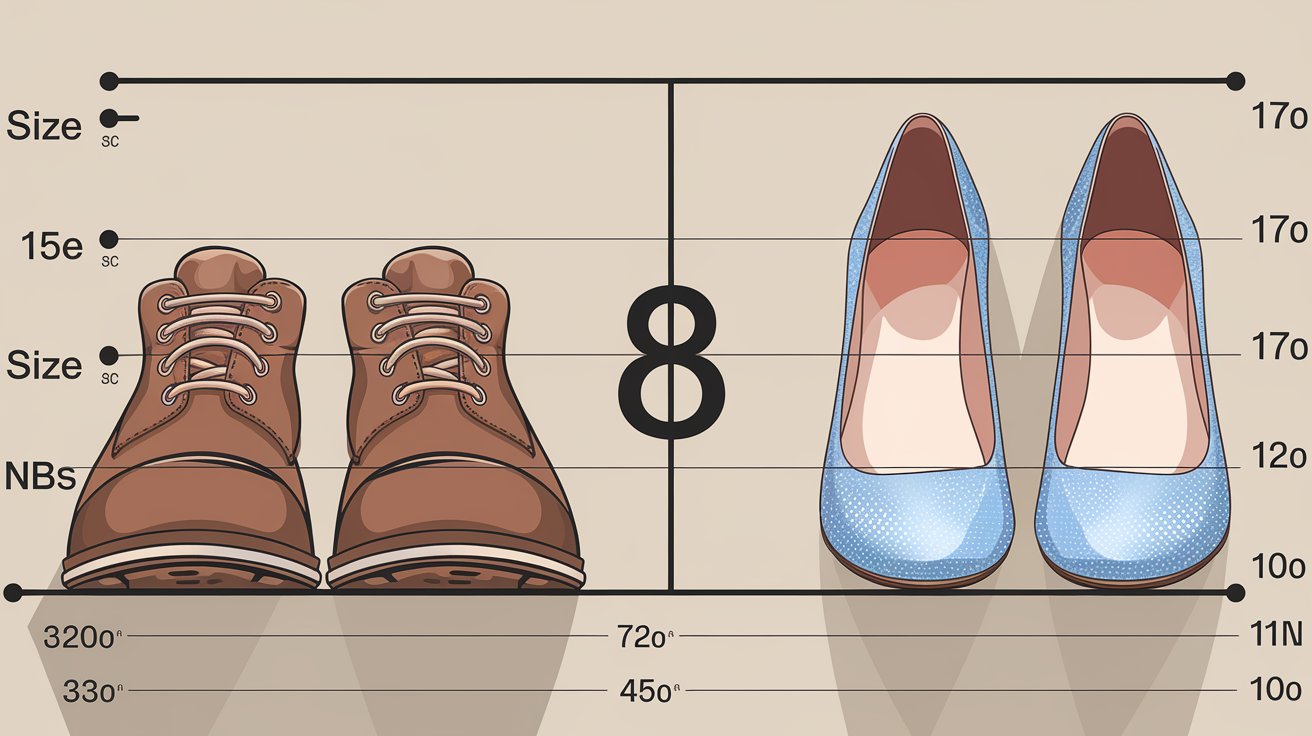Shopping for shoes, whether in-store or online, can feel overwhelming when sizes don’t align. Men’s and women’s shoes not only have different size ranges but also vary in fit, width, and design. If you’re looking to convert sizes or understand the difference, this guide is for you.
We’ll explore:
- The key differences between men’s and women’s shoe sizes.
- Detailed conversion charts for US, UK, and EU sizing systems.
- Expert tips for measuring your feet.
- Answers to common questions, and more.
Let’s ensure your next pair of shoes fits perfectly—every time!
How Men’s and Women’s Shoe Sizes Diffe

Understanding the fundamental differences can help you make informed choices:
- Length:
- In the US sizing system, women’s shoes are generally 1.5 sizes larger than men’s. For instance:
- Men’s size 8 = Women’s size 9.5.
- In the UK system, the difference is typically 1 size.
- In the US sizing system, women’s shoes are generally 1.5 sizes larger than men’s. For instance:
- Width:
- Women’s shoes are narrower than men’s to accommodate smaller, slimmer feet.
- Men’s shoes have a broader fit, particularly in the toe box and heel area.
- Style and Fit:
- Men’s shoes often focus on functionality and durability.
- Women’s shoes prioritize a tailored, stylish look, often at the expense of extra width.
Comprehensive Shoe Size Conversion Char
Here’s an expanded chart for quick and accurate size conversions across different systems:
| Men’s US Size | Women’s US Size | Men’s UK Size | Women’s UK Size | EU Size | Japan Size |
|---|---|---|---|---|---|
| 6 | 7.5 | 5 | 4.5 | 39 | 24.5 |
| 7 | 8.5 | 6 | 5.5 | 40 | 25.0 |
| 8 | 9.5 | 7 | 6.5 | 41 | 26.0 |
| 9 | 10.5 | 8 | 7.5 | 42 | 27.0 |
| 10 | 11.5 | 9 | 8.5 | 43 | 28.0 |
| 11 | 12.5 | 10 | 9.5 | 44 | 29.0 |
Pro Tip: European sizes are unisex, making them a reliable option for anyone struggling with conversions.
How to Measure Your Feet for Accurate Sizing
Measuring your feet at home is easy and ensures the perfect fit. Here’s how:
- Prepare Your Materials:
- A piece of paper large enough to fit your foot.
- A pencil or pen.
- A ruler or measuring tape.
- Steps:
- Place the paper on a hard, flat surface.
- Stand barefoot on the paper, ensuring your weight is evenly distributed.
- Trace the outline of your foot with the pencil held perpendicular to the paper.
- Measure:
- Length: From the back of your heel to the tip of your longest toe.
- Width: Across the widest part of your foot.
- Tips for Accuracy:
- Measure both feet. It’s common for one foot to be slightly larger than the other.
- Add 0.5 cm (or about 1/4 inch) to the length to account for roominess.
- Use your larger foot as the reference size when choosing shoes.
How to Choose the Right Shoe for Your Size
Even with accurate measurements, finding the perfect pair involves more than just size. Consider these factors:
- Width Matters:
- Check if the brand offers width options (e.g., narrow, regular, wide).
- Look for labels like “D” (standard for men) or “B” (standard for women).
- Activity-Specific Shoes:
- Running shoes often have more cushioning and a snugger fit.
- Hiking boots may require extra space for thicker socks.
- Try Before You Buy:
- If possible, test the shoes with the socks you’ll wear regularly.
- Walk around to ensure there’s no pinching or slipping.
- Read Reviews:
- Reviews often highlight if a brand’s sizing runs large, small, or true to size.
Commonly Asked Question
1. Can women wear men’s shoes and vice versa? Absolutely! Just convert the size and ensure the fit matches your foot width and activity needs. Women often opt for men’s shoes for sports or outdoor activities due to the wider fit.
2. Are shoe sizes standardized across brands? Not always. Some brands, like Nike or Adidas, are known to run small, while others, like Skechers, may offer roomier fits. Always consult the brand’s size chart.
3. How do I know if my shoes fit properly?
- There should be about a thumb’s width (1 cm) of space between your longest toe and the shoe’s front.
- Your heel should stay secure without slipping.
4. Are unisex shoes a good option? Yes! Unisex sizing, often based on European measurements, offers a versatile solution for both men and women.
Why Shoe Fit Impacts Your Health
Ill-fitting shoes can cause:
- Blisters, corns, and calluses.
- Long-term issues like bunions or plantar fasciitis.
- Back, hip, and knee pain due to poor posture.
Investing in the right size improves not just comfort but also overall foot health.
Conclusion
Understanding men’s and women’s shoe sizes, along with proper conversion and measurement techniques, ensures a comfortable and stylish fit for any occasion. Whether you’re buying sneakers, formal shoes, or boots, this guide has you covered



Leave a Reply